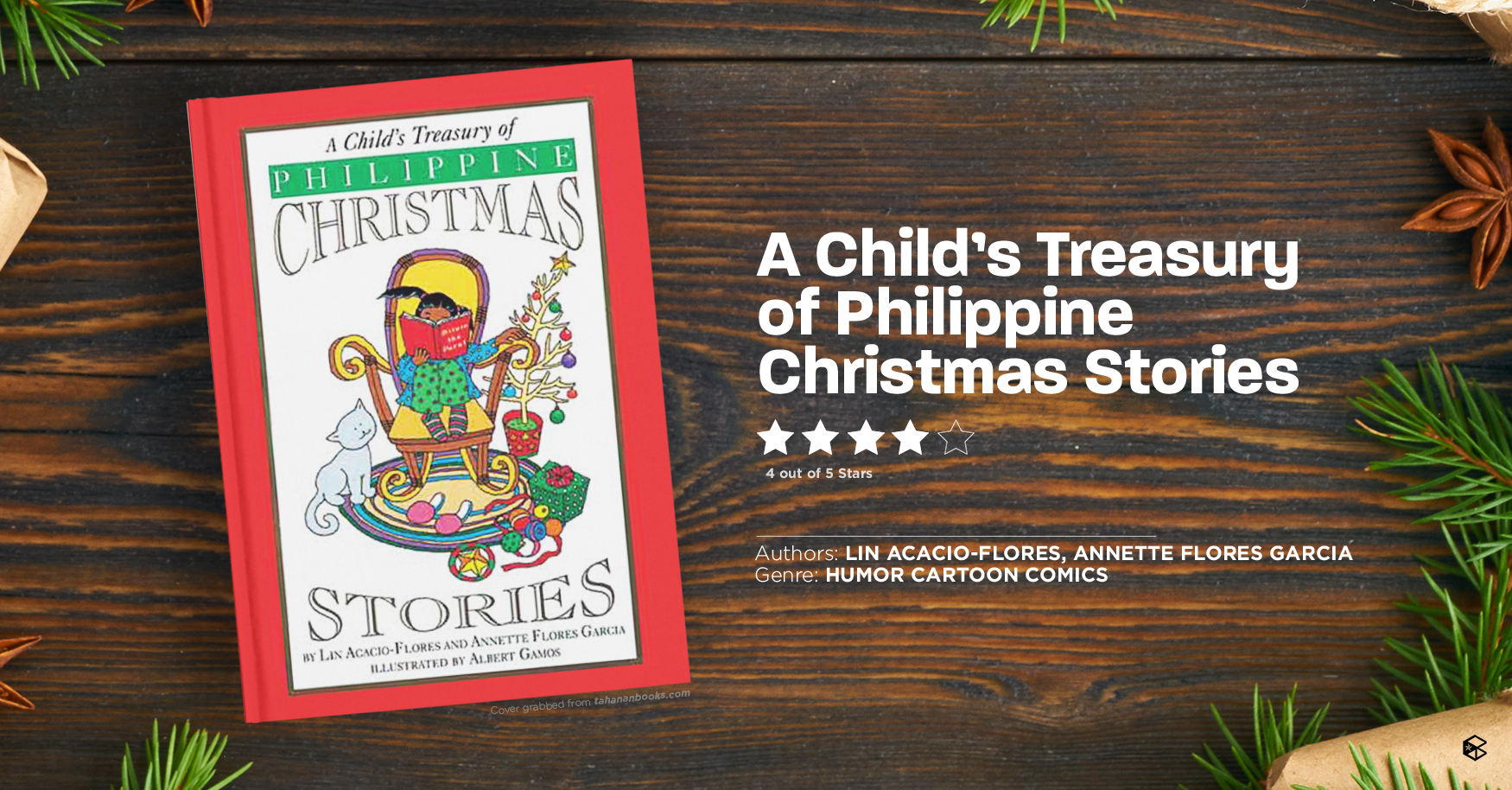With family celebrations, door-to-door Christmas carols, and Noche Buena, they say nothing can beat Paskong Pinoy. Through a child’s eyes, the yuletide season is new and novel. Wonder what it feels like to experience the holiday season for the first time again?
With 10 short stories originally published in 1996 that charms both young and old, “A Child’s Treasury of Philippine Christmas Stories” by mother-daughter duo Lin Acacio-Flores and Annette Flores Garcia celebrates Christmas traditions and ornaments unique to the nation within the eyes of children ages 8 to 12.
Use of local materials
The Philippines starts preparing for Christmas at the start of the “Ber” months. The first short story “The Bamboo Who Wanted To Be A Christmas Tree” captures a child’s anticipation for Christmas. Winning the third prize in the Don Carlos Palanca Memorial Awards for Literature in the category of Short Stories for Children (English) in 1993, the writer duo contrasts the bamboo, a local, affordable, and familiar tree to the pine tree from which the Christmas tree is usually made. The story gives a look into the preparations behind the holiday and what local materials have been used to adopt Christmas traditions in our tropical country. By introducing tupig, a delicacy of glutinous rice and coconut, and ghost stories, the writers give context on the historical origins of the holiday by inviting them into the Spanish colonial city of Vigan in “The Christmas Ghosts of Vigan.”
Highlighting native flora and fauna
Continuing on showcasing Filipino heritage and beautifully capturing the childlike wonder of how Christmas unfolds, the writers spark enchantment and curiosity in “Maya and the Tamaraw.'' The nearby town’s decorations, masses, and handa such as puto bumbong, bibingka, and salabat contrast with the native bird Maya’s and the endemic Tamaraw’s life in the forest. The Tamaraw describes the town’s lights as “fallen stars” and it calls to mind how an outsider looks into the Christmas traditions as our ancestors must have once found this holiday unrelatable.
Within the same thread of personifying Christmas ornaments to entertain and educate kids, the writers introduce music in “Kito and the Bamboo Organ,” as an essential accompaniment to the Filipino Christmas. Music creates an engaging and lively atmosphere. This organ made out of bamboo shows how local materials and communal culture are combined with the Western traditions of Christmas.
Likewise, the story of “Bituin the Parol” praises the skill and artistry put into the parol and the Capiz shell material it is made of that cultivates the distinct holiday look of the nation. And in “Binny and the Coconut Man,” which is about a boy and a duwende (elf) living in a coconut tree about to be cut down, introduces a charming Christmas elf equivalent. The coconut man’s plight of losing its home gives young readers another angle of the holiday as not “everybody would be home for Christmas.” It also suggests a loss of a singular cultural identity as it meshes with colonial and global influences.
Embracing diversity
In “The Aeta Christmas Baby,” an Aeta child from a village affected by the Pinatubo eruption joins a family on Christmas Eve as they reenact the panunuluyan, the birth of Jesus, with their Belen. Similarly in “The Poor Man Who Becomes a King,” the story of The Three Kings is acted out. Though simplified for children, the stories touch on how indigenous tribes and people from different social status also celebrate the holidays despite financial issues or natural disasters. It becomes an avenue to generously share our blessings so that all may enjoy. Thus, the Filipino Pasko spirit is inclusive as it inspires us to extend Bayanihan and spread happiness.
Further, the book introduces a family with a Muslim father and a Christian mother in “The Sultan with a Heart of Stone.” It asks whether these two religions can coexist. As the book takes kids’ imaginations to Vigan and to Mindanao, they are skillfully presented with a myriad of colonial, cultural, and indigenous traditions. In short, no matter our differences, Pasko can bring different people together.
The book concludes with “The Christmas Bell” as the Noche Buena shifts into the Misa de Gallo with the loud ring of a Spanish church bell signaling Christmas Day.
Finally, the book employs digestible prose, delightful characters, and bitesize imagery to provide an immersive snapshot of a Filipino Pasko experience you can find nowhere else in the world.
While social gatherings are discouraged this 2020, refresh your eyes with the magic of Pasko and purchase the book here.


